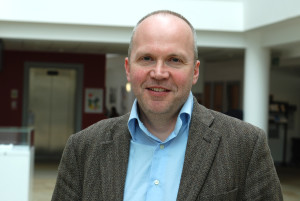Dr Rupert Till and a team of technicians at the University of Huddersfield have launched an app which brings the sights and sounds of sites like Stonehenge back to life. Unlike other computer game-like walkarounds, the sonic dimension of the Huddersfield app enables the user to hear what an ancient site used to sound like, in addition to being able to see what it looked it. This has been achieved by integrating acoustic modelling and using recordings of relevant ancient musical instruments.
The app turns smartphones, tablets and computers into time travel devices, enabling users to see and to hear ancient and mysterious sites such as Stonehenge as they were in the distant past, before they fell into ruin.
Named the EMAP Soundgate, it is now available as a free download for iPhones and iPads, Android devices, for PC and Mac, and with a Mac only version at Apple’s App Store.
Exploring world heritage sites
In addition to Stonehenge, where Dr Till has conducted extensive research on the original acoustics, the first release of the app enables users to make visual and sonic virtual tours of two other World Heritage sites – Palaeolithic Age decorated caves near Altamira in Northern Spain, and the ancient Roman theatre at Paphos in Cyprus. New sites could be added to future releases, and there are also plans to adapt it for virtual reality headsets.
Full physical access to the sites included on the first version of Dr Till’s app can be restricted. It is rare to be allowed to enter the centre of Stonehenge, for example and some of the caves are not open to the public. Therefore the app, installed on a portable device, can enrich or even replace an actual visit. Stonehenge today is a remnant of what used to be there and this app enables visitors to see and hear what it was like at different periods, from the beginning of its development through to its completion about 4,000 years ago. App users will also have the choice of visualising the site in daylight, dusk or after dark, with appropriate natural sounds.
Ancient musical sound bank
Ancient musical instruments form part of the app’s sound bank, alongside environmental sounds such as bird song. Dr Till’s recent activities have included the production of recordings for the European Musical Archaeology Project. They have included an acclaimed disc of Viking age music and the sounds made by ancient bone flutes.
The app has been conceived, developed and produced in-house at the University of Huddersfield, with the expertise of its Computer Games department being crucial to the digital modelling, based on the acoustic data provided by Dr Till.

Spotlight
Professor of Music, Dr Rupert Till
Professor of Music, Dr Rupert Till, has a global reputation for “sound archaeology”, including investigations into the acoustics of ancient spaces, and for recreating the music and instruments of early civilisations. His research into the sound properties of sites that include Stonehenge and prehistoric cave dwellings in Europe has led to a free app named the EMAP Soundgate that can be downloaded for PC, Mac, Android and iOS operating systems. The app is the culmination of some six years’ research by Dr Till, who has been in receipt of major funding from EU sources and from the UK’s Arts & Humanities and Engineering & Physical Science research councils. To find out more about the research in this article, please contact Dr Rupert Till, email: r.till@hud.ac.uk
Spring 2017 Issue
Return to the home page for the Spring 2017 Issue of Discover.
Next article
New research from the University of Huddersfield Press. Including the Grist Anthology and Fields: journal of Huddersfield....
